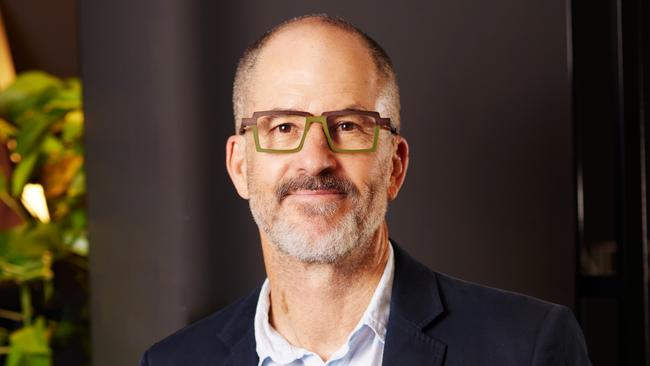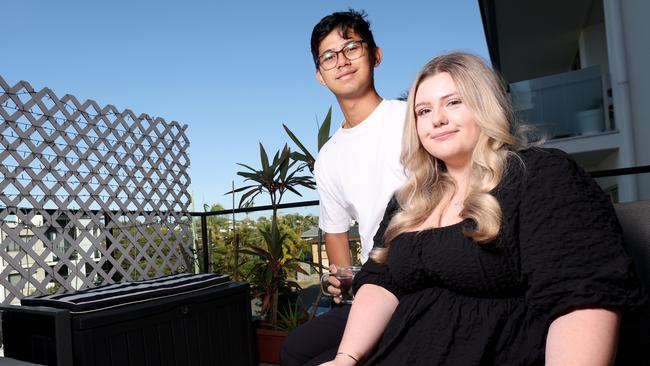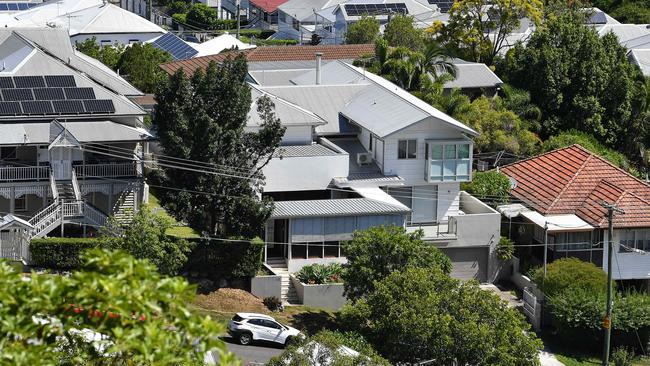Housing affordability in Qld now worse than GFC, mining boom
Buying a home in Queensland is the toughest in 16 years, with housing affordability worse than during the mining boom.

Property
Don't miss out on the headlines from Property. Followed categories will be added to My News.
Buying a home in Queensland is officially the toughest it has been in 16 years, with housing affordability at its worst since the depths of the mining boom.
The great Australian dream of owning a home is now harder to achieve than in 2008, according to alarming findings from the inaugural PropTrack Housing Affordability Index, launched today.
The index reveals the time it takes to save a deposit for a home in the state is close to being the longest on record, but buyers here are better off compared to all the other states — except Western Australia.
The index analyses data as far back as the mid 1990s to measure the cost of housing for every household relative to income, borrowing power, location, and time.
A household earning an average Queensland income of $101,600 buying a median-priced home in the state would have to spend 31 per cent of their income on mortgage repayments, which is still better than in 2007 when it was 34 per cent, and their peak of 38 per cent in 1989.

The Index reveals 2008 was the worst year for housing affordability in Queensland on record, when the mining boom drove strong demand for housing.
PropTrack economist Angus Moore said the fact housing affordability in Queensland was better than it was in 2007/08 — the worst year on record — highlighted just how tough it was during the mining boom.
“Queensland’s affordability hasn’t deteriorated as badly as other states,” Mr Moore said. “Prior to the pandemic, it was a relatively affordable market in comparison to Sydney and Melbourne, but has seen stronger price growth since, which has made it less affordable.

“We haven’t seen as much of a downturn in prices in Queensland. They’re now higher than they were before interest rates started rising.
“But that relative affordability, especially compared to other eastern capitals, will continue to be an attractive feature for interstate movers.”
But Mr Moore said affordability in Queensland had become much tougher in the past two years, and the time it took to save a deposit (5.4 years) was close to its longest ever.
A median-income household could only afford to make repayments on 16 per cent of all homes sold in the past year.
The lowest 20 per cent of income-earning households in Queensland could only afford two per cent of homes.
Even high income households, earning $193,000 a year, could afford to buy nearly 60 per cent of all homes sold in the past year.
Master Builders Queensland CEO Paul Bidwell said “runaway increases” in the cost of building new homes post-Covid was contributing to the housing affordability problem in Queensland.

ABS figures show the cost to build a new home increased more than 40 per cent in the three years to the end of 2022, and the rise in building costs has moderated recently in all states except Queensland, which recorded a near 10 per cent increase in the 12 months to June 2023.
“On top of increased building costs, we had soaring house prices fuelled by interstate migration and low interest rates — up until mid-2022),” Mr Bidwell said.
“The state government is not helping matters by pushing ahead with changes that will further increase building costs. They are hell bent on introducing accessibility and energy-efficiency requirements for new homes from the first of October.
“The cost to build will go up around $20,000 to $30,000 depending on the type of construction, climate zone, topography, lot size, etc.”

The PropTrack Index measures affordability based on the share of homes households can afford to purchase across the whole income distribution, using data dating back to 1995.
It assumes the household already has a 20 per cent deposit, spends 25 per cent of their gross income on mortgage repayments, and takes into account the prevailing average mortgage rate (currently 5.94 per cent) plus a buffer rate.
Finder home loans expert Richard Whitten said saving the deposit was definitely the biggest hurdle for most first homebuyers.
MORE PROPERTY NEWS:
Brisbane home prices 50pc higher than before the pandemic
Australian rental crisis: Why affordability is no easy fix
“Wage growth over the past few decades simply hasn’t kept up with skyrocketing property prices,” Mr Whitten said.
“Saving up enough for a deposit, especially when the cost of everything from food, energy, and insurance — not to mention rent — is rising, is a big barrier to overcome. Buying a home is becoming increasingly out of reach for many Aussies.”
But Mr Whitten said first homebuyers should not feel discouraged.
“Having a realistic budget and getting into a good savings habit early on, even if it’s just small amounts each month, will put you on the right track,” he said.

“See if you can find ways to stretch your dollar even further. Make sure you’re not paying for things you don’t need or aren’t using, and don’t pay too much for what you do need.
“Money management apps, like the free Finder app, are a great way to keep track of your income and expenses, and from there you can find ways to save even more.”
Agent Jessicca Gerretzen from Harcourts Connections believes the Great Australian Dream is “still attainable”.
“This market has made it possible for first homebuyers to come into the market and be at the same buying level as investors,” Ms Gerretzen said.
“My first homebuyer market is outperforming my investors. Is the Great Australian Dream attainable? Yes!”

Ms Gerretzen said she had noticed first homebuyers had become more savvy and cautious about spending money.
“For our first homebuyers, there has been quite a bit of education that has needed to happen,” she said.
“The banks were throwing out silly money and because of that first homebuyers have needed to become conservative.
“Buyers aren’t being taken as fools anymore. We have more educated brokers. In general, everyone is more educated and we aren’t as enthusiastic about spending money.

“I think with this new fleet of first homebuyers, they are our future entrepreneurs that will go on to buy multiple properties. I feel very safe with this fleet of buyers.”
Kate Hill of national buyers’ agency Adviseable said there were still pockets offering affordable properties with good long-term prospects.
“In many parts of Australia, especially our biggest capital cities, it’s extremely difficult
to find a property priced under $550,000, but there are suburbs where affordable
homes are still available,” Ms Hill said.
“As buyers’ agents, we’re currently working with a range of clients where budget is a
main consideration for them.
“It’s tough out there at the moment, with the shallow pool of available properties for
sale attracting a lot of attention.”
Originally published as Housing affordability in Qld now worse than GFC, mining boom



